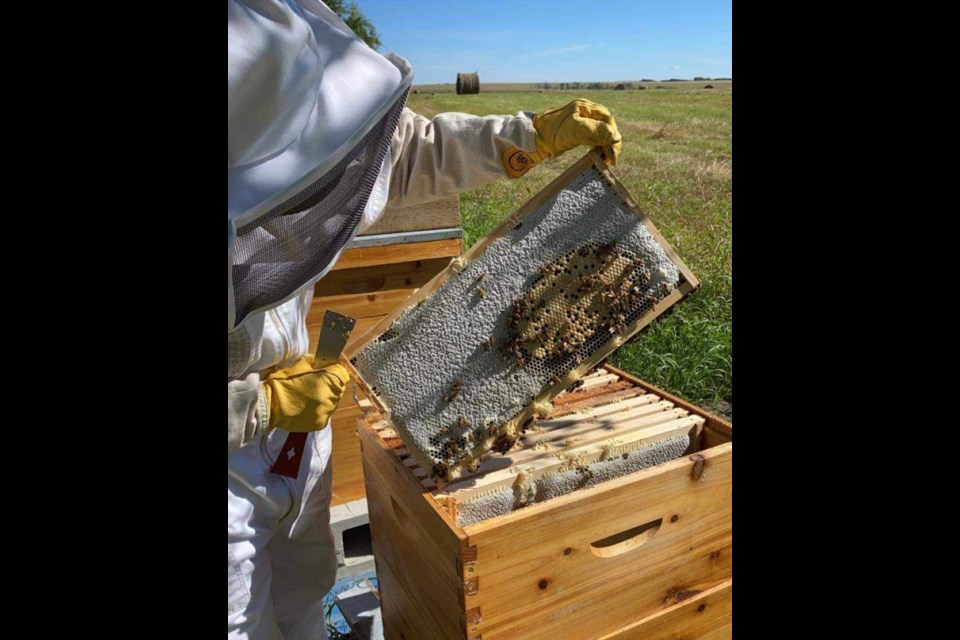OXBOW - Crystal Harper has always been a homesteader at heart, planting a large vegetable garden, raising animals and making as much as possible from scratch.
Harper was born and raised on Vancouver Island. She attended Olds College in Alberta, receiving her diploma in equine science and majoring in western horsemanship.
In 2007, Harper and her husband Kal bought a farm near Manor. They have two daughters, Candence and Peyton.
Harper started an equine facility with lessons, training, boarding and breeding Andalusian horses.
The breed was chosen for its beauty and ancient breed. They are highly intelligent, bond well with their owners and have a notable talent for dressage, something Harper is enthusiastic about.
She began riding dressage 18 years ago and decided to buy an Andalusian stallion, as there were few in Canada of this breed.
After 16 years on the Manor farm, they decided to downsize, sold the farm and moved to an acreage near Oxbow.
In the meantime, Harper began researching everything about honey bees. The more research she did, the more she realized she needed to know.
After reading several books and watching a ton of videos, Harper contacted Jack Wilson from Carlyle, who was also a former beekeeper, and asked him a hundred questions.
Wilson was happy to help Harper and she was grateful to have a mentor.
Bee supplies were ordered, the materials to build the hives were purchased and the perfect spot on the farm was located.
Beginning with two hives in 2022, which can house at least 20,000 bees , approximately 80 pounds of honey were produced in the first year.
Hives can reach 100,000 bees if it is thriving.
They moved to the acreage in 2023, took the two hives with them and added two more hives to have four, but also caught a swarm of bees, giving her an extra hive.
A neighbour saw the swarm of bees resting on a fence post and called Harper. This was the most exciting experience forher.
Suited up in her beekeeper's gear, Harper took a hive and began gently going through the swarm to find the queen. The worker bees surrounded the queen to protect her, yet the swarm was docile from their journey.
After finding the queen, she was placed in the box and Harper returned a few days later to find all the bees in the box. With all the holes sealed, it was transported carefully to her acreage and placed by the other hives.
Some honey is always left in the hive over the winter with extra food to sustain the bees. The bees will also not mess in the hive and will venture out of the hive in the winter, and some of them will die.
If a hive loses their queen, they will make an emergency queen cell and produce a queen. If this does not work, the worker bees will die over time.
Last summer Harper's four hives produced 400 pounds of honey, which in turn gave Harper over 200 jars.
The process takes all day as her extractor is not large. The beeswax is scraped off the frames, and it is placed in the extractor that spins and removes the honey.
It goes through a filtering system twice and then is placed as honey in jars.
Beeswax is used to make lip balms, lotion bars and candles, among other things.
Harper is always looking to be productive and is now making soap, but not from beeswax.
She said this is very much a learning curve as well, using different oils and techniques.




